Must-Have Gear for Elk Hunting
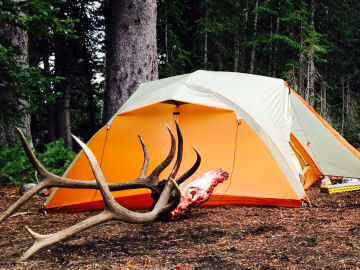
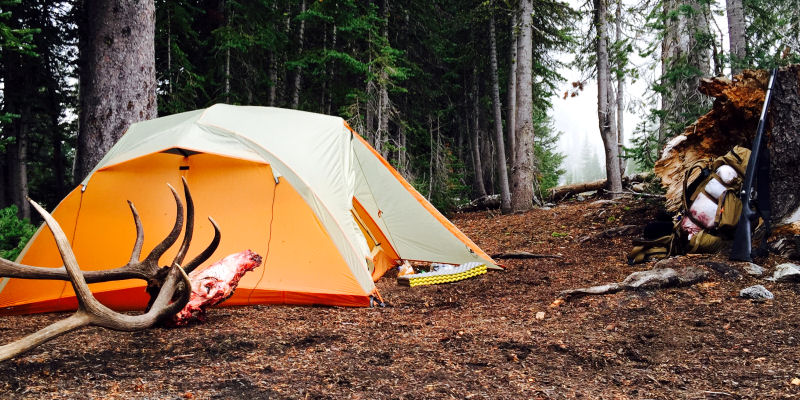
Like hunting tactics, backcountry gear is as individualistic as it gets. Everyone has their own opinion about what they like to use and how they like to use it. The following are some highlights of my ever-evolving backcountry gear. Some of these items I won’t hunt without, and most of them are ideas I actually robbed from others. That’s right, I’m not afraid to copy a good idea when I see one! If you have ideas or gear tips, please share them with us in the comments area below.
Trekking Poles
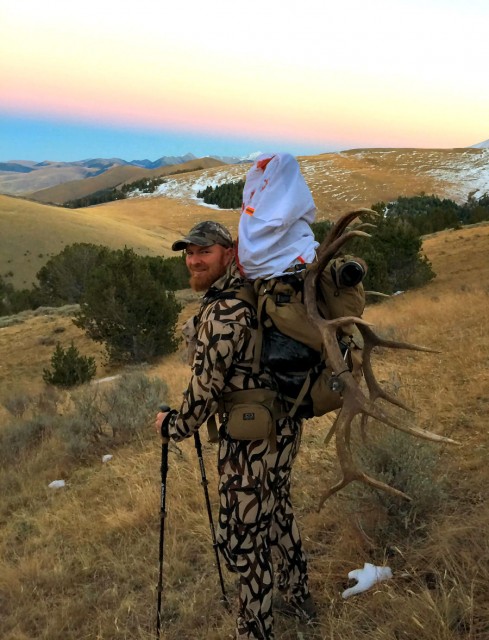 Sissy sticks, walking sticks, trekking poles – whatever you want to call ’em, I love ’em! Their real value doesn’t necessarily come out while in the act of hunting, but more so in getting there and back with a heavy load. That job in itself is made easier – and actually safer – while using trekking poles. Mark my words, if you’ve never used them and balk at the idea, your life will change if you try them just once. This will be especially evident if you have to pack 1/3 of a bull and camp on your back 12 miles out of a Colorado wilderness in the dark, uphill with wolves chasing you. Well, 12 miles and uphill anyway…
Sissy sticks, walking sticks, trekking poles – whatever you want to call ’em, I love ’em! Their real value doesn’t necessarily come out while in the act of hunting, but more so in getting there and back with a heavy load. That job in itself is made easier – and actually safer – while using trekking poles. Mark my words, if you’ve never used them and balk at the idea, your life will change if you try them just once. This will be especially evident if you have to pack 1/3 of a bull and camp on your back 12 miles out of a Colorado wilderness in the dark, uphill with wolves chasing you. Well, 12 miles and uphill anyway…
Navigating blowdowns and steep, rocky terrain with a heavy load can be sketchy. Trekking poles provide you with two more feet on the ground. I don’t know that there is one brand that is better than the other. I did spend $180 on a pair of Black Diamond carbon fiber flick-lock poles that weigh one pound (https://www.elk101.com/store/black-diamond-carbon-distance-flz-trekking-poles) and thought I was pretty cool until someone showed up in camp with a pair from Costco that cost $40. I suddenly didn’t feel so cool. When it comes to a reliable trekking pole, the key point for me is the flick locks. They are adjustable and easy to use, even while wearing gloves. I also prefer cork handles. I have sweating issues, and the cork absorbs sweat unlike the rubberized grips that are slippery when wet.
Tent
I like my creature comforts, and at the cost of just 2lbs 3oz, I’ll take my Big Agnes Copper Spur UL1 (1 person) tent (https://www.elk101.com/store/gear/camping/big-agnes) over a bivy sack any day of the week. To me, it is way more comfortable and I can store my gear under the vestibule to keep it dry. Setup is quick and easy, and you won’t have critters crawling in your sleeping bag with you!
My main preference for a tent is side entry access rather than front entry. I must be getting old, but it’s so much easier to come out of the saddle sideways than doing the butt shuffle across everything in your tent to get out. I also like having enough head room to sit up and eat breakfast or put on my boots. There is nothing worse than being hunched over while trying to lace up your boots. If you’re expecting adverse weather, I’d suggest looking at a little bigger tent – something like the Copper Spur UL2 (2 person). It weighs about a pound more than its 1P counterpart, but will provide more room for you and your gear if you’re tent-bound for a day or two. The two-person tent will hold two dudes if you really like each other, but it’s pretty cozy.
The Long Spoon
Most of us eat Mountain house meals, and there’s nothing worse than getting Lasagna with Meat Sauce (https://www.elk101.com/store/gear/nutrition/mountain-house) all over your hands and pants – and everything else you touch – after dinner. After three days in the backcountry, it’s not like you’re scent-free anyway, but it doesn’t help to smell like cheese the remainder of the hunt. For that very reason, they invented the long Spoon! There is also a long Spork made by Sea to Summit. Either way, go long or you can plan on getting your grubby little hands dirty!
 Water Filtration
Water Filtration
After cussing the old-school pump system that typically weighs over a pound and is prone to breaking at the most inopportune moment, we were introduced to the Sawyer Water filter system. These little gems weigh just 3 oz, are nearly bullet proof, and, according to the manufacturer, will filter 1,000,000 gallons of water. There are several different bag sizes, but for most situations, I roll with the 32 oz bag. They are also incredibly easy to use and easy to clean…what more can you ask for?
For extra water supply and to mix my powdered drink, I usually buy a $1 water bottle for the trip. I like the 32 oz Smart Water bottles because they are slim and tall and will fit most anywhere in your pack. They are much lighter than a Nalgene bottle and you won’t lose any sleep if you misplace it. I run a 3-liter Platypus bladder (https://www.elk101.com/store/platypus-big-zip-hydration-bladder) in my pack in addition to the water bottle and Sawyer bag. If I’m keeping up with my water demands, I should be drinking most of the 3 liters in a day. The 32oz water bottle will give me enough water for my Mountain House and hot toddy for dinner. If I was smart, I filled the Sawyer bag for coffee in the morning.
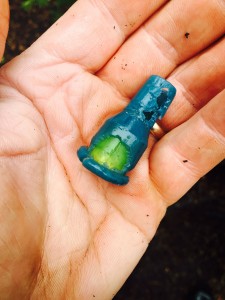 One thing I have learned by experience is to keep a spare bite valve in my pack, just in case a mouse takes a liking to the one outside my pack. A spare has come in handy on more than one occasion.
One thing I have learned by experience is to keep a spare bite valve in my pack, just in case a mouse takes a liking to the one outside my pack. A spare has come in handy on more than one occasion.
GPS
One more piece of gear I won’t leave home without is my GPS. I’m not a tech nerd and I don’t have a list of the latest and greatest GPS’s, but I know they are a life saver. I have a Garmin Oregon 450T (https://www.elk101.com/store/gear/electronics/garmin) which has all the bells and whistles I need to get to where I’m going and back, and it didn’t break the bank. We typically leave camp at or before daylight and almost never get back before dark. In most cases, we end up walking a few miles back to camp in the dark – a task that would be nearly impossible without a GPS. Between marking the trailhead, marking where camp is, and marking a kill sight, GPS’s are the bomb! By adding a map chip from OnXMaps (https://www.elk101.com/store/gear/electronics/onxmaps) for the state you’re hunting, you’ll be all set. That little card has enabled us to hunt small pockets of public land that we otherwise didn’t know existed. I can tell you that it’s added to our success in harvesting elk because we were able to identify land ownership.
Miscellaneous
A small foldable pad has kept my rear end dry and comfortable while taking a break or for extended periods of glassing. I simply cut a full-length sleeping pad in half, and it rides on the outside of my pack at all times.
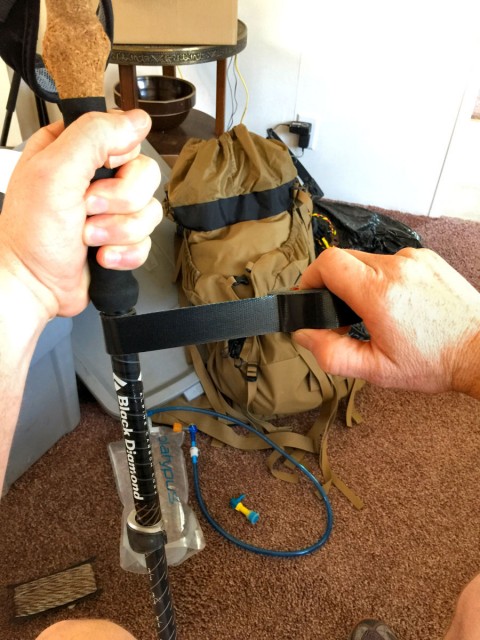 I also like to carry Gorilla tape, which I wrap around anything I can think of in my pack (i.e., trekking poles, etc.). I try to utilize other methods of carrying the tape and take just enough to make emergency repairs.
I also like to carry Gorilla tape, which I wrap around anything I can think of in my pack (i.e., trekking poles, etc.). I try to utilize other methods of carrying the tape and take just enough to make emergency repairs.
Nitrile gloves are nice to have if we’re lucky enough to kill something. I typically throw four or five pair in my pack. They definitely aren’t a necessity, but if water is scarce, it sure is nice to eat dinner or pick your nose without dried blood and meat under your fingernails! I always have to carry multiple pairs because my hunting buddies inevitably want to “borrow” them when they see how neat they are.
Lastly, a good stick of chapstick can be a life saver. I never use chapstick any other time of the year except during hunting season, and I always have a stick in my pack. There is not much worse than chapped, bloody lips four days into a 12-day hunt.
As you can see, gear lists are often very personalized. Mine continues to be tweaked to make life in the backcountry more comfortable, and to make getting there and back as enjoyable as possible.

